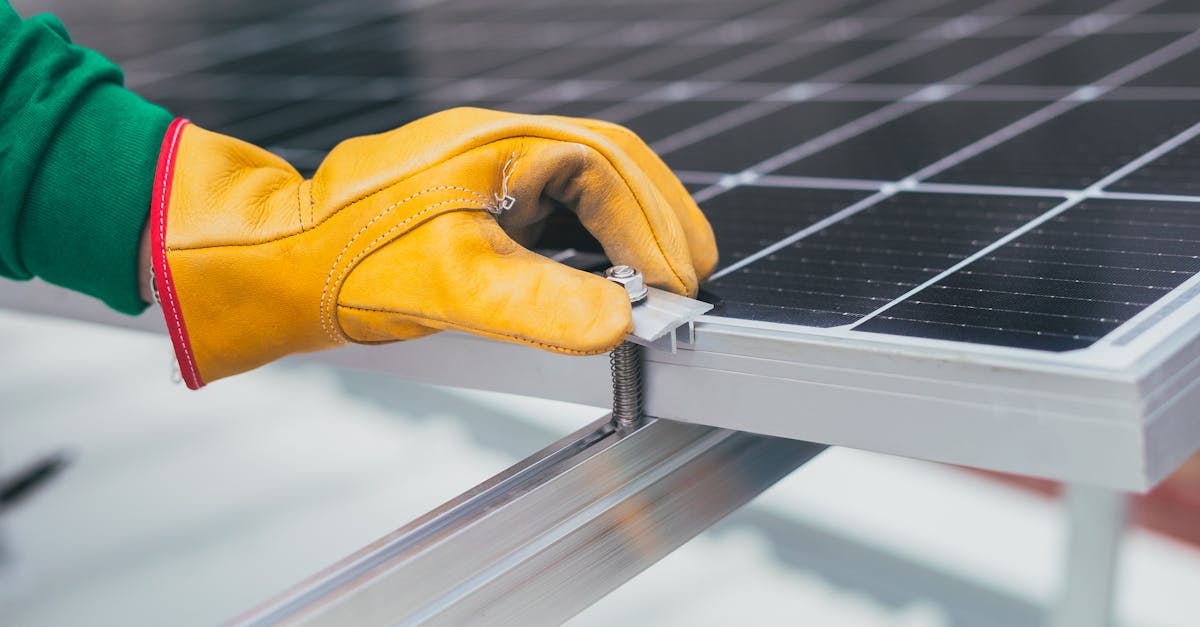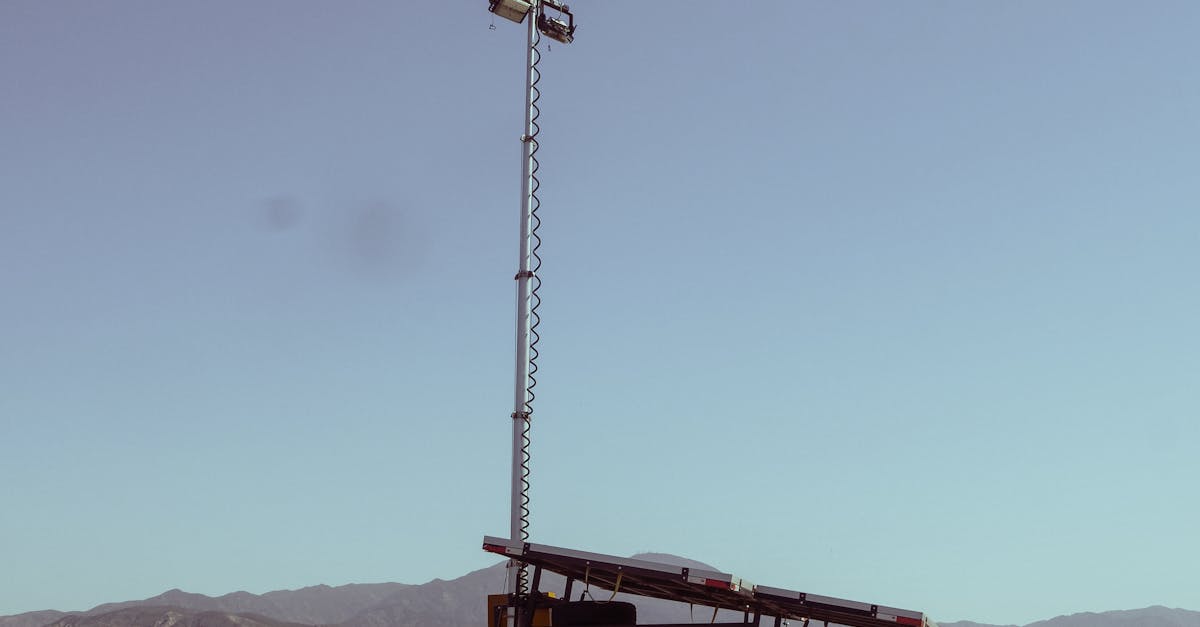
Table Of Contents
Solar Panel Orientation Strategies
The orientation of solar panels is crucial for maximising energy production. Ideally, panels should be positioned to face true south in the northern hemisphere and true north in the southern hemisphere. This alignment allows for the best exposure to sunlight throughout the day. Adjustments may be necessary based on geographical location, seasonal sunlight variations, and shading effects from nearby structures. A well-planned solar panel system design considers these factors to ensure optimal performance.
In addition to fixed orientations, dynamic positioning can enhance energy collection. Some installations may benefit from adjustable mounts, allowing the angle of the panels to be altered seasonally or based on specific solar paths. Innovations in tracking technologies enable panels to follow the sun's movement, significantly increasing electricity generation. Integrating these strategies into solar panel system design can lead to greater efficiency and a more robust return on investment over the system's lifespan.
Best Positions for Maximum Sunlight
The optimal positioning of solar panels significantly influences their efficiency in harnessing sunlight. Ideally, solar panels should be oriented towards the south in the Northern Hemisphere to capture the maximum amount of sunlight throughout the day. The angle of tilt is also crucial; a tilt equal to the latitude of the location generally yields the best performance. Seasonal adjustments can enhance energy production further, allowing solar panel systems to align more closely with the sun's path as it alters over the year.
In addition to orientation and tilt, the layout of solar panels on the installation site should consider the surrounding environment. Avoiding locations with obstructions such as trees, buildings, or other structures that cast shadows can increase the potential energy output. Conducting a thorough assessment of any shade patterns throughout the day can guide effective solar panel system design. This strategic approach ensures that solar panels receive unobstructed sunlight, maximising their efficiency and performance in energy generation.
Environmental Considerations
When planning a Solar Panel System Design, environmental factors play a pivotal role in determining efficiency and overall performance. Local climate conditions can significantly influence solar energy production. Areas with consistent sunshine will maximise energy generation, while regions with frequent cloud cover or inclement weather might require alternative designs or supplementary energy sources to ensure sufficient power supply. Soil composition and site topography should also be taken into account to optimise the installation process and longevity of the panels.
Another critical aspect to consider is the impact of local wildlife and vegetation on solar setups. Trees or neighbouring buildings can create shading that diminishes solar output. Therefore, a thorough shade analysis should be conducted to identify potential obstructions throughout different times of the year. Ensuring that the selected layout accommodates growth patterns of nearby flora will help maintain optimal sunlight exposure, which is essential for an efficient Solar Panel System Design. Careful consideration of these environmental elements leads to more sustainable and productive solar energy solutions.
Shade Analysis for Optimal Placement
To achieve optimal energy production from a solar panel system, understanding the shade dynamics throughout the day is crucial. Trees, buildings, and other structures can create significant obstacles that reduce the efficiency of solar panels. A detailed shade analysis involves monitoring the areas where shadows fall during peak sunlight hours, allowing for informed decisions on panel placement. This ensures that panels receive the maximum amount of direct sunlight, thus enhancing overall performance and energy yield.
Incorporating shade analysis into the solar panel system design not only improves output but also influences the choice of technology. Some modern systems are more resilient to partial shading, utilising optimisers or micro-inverters that can mitigate the losses caused by shaded conditions. As a result, conducting a comprehensive shade assessment before installation plays a vital role in maximising the effectiveness of solar installations in varying environments.
Technological Innovations in Solar Layouts
Recent advancements in solar technology have led to significant innovations in solar panel layouts. One notable development is the implementation of advanced tracking systems, which allow solar panels to follow the sun’s trajectory throughout the day. This dynamic positioning increases exposure to sunlight, thus enhancing energy generation compared to fixed installations. These tracking systems can be particularly beneficial in regions with high solar insolation, optimising the overall efficiency of the solar panel system design.
Moreover, smart algorithms are now integrated into solar panel system design, enabling real-time responses to climatic variations. Factors such as cloud cover and seasonal changes can be predicted, allowing the system to adjust operations accordingly. These technological improvements not only maximise energy yield but also contribute to the sustainability of solar installations. As the demand for renewable energy continues to rise, such innovations are essential in shaping the future of solar energy solutions.
Advancements in Tracking Systems
Recent advancements in tracking systems have revolutionised solar panel system design by ensuring panels receive optimal sunlight throughout the day. These systems adjust the angle of solar panels in real-time, following the sun's trajectory across the sky. The increased energy capture can lead to significantly enhanced efficiency compared to fixed installations. Incorporating single-axis and dual-axis trackers allows for flexible movement. This innovation provides a vital edge, particularly in regions where sunlight availability varies seasonally.
In addition to traditional methodologies, new technologies integrate machine learning and predictive algorithms to optimise tracking performance further. These systems can anticipate sunlight patterns based on historical weather data, thereby improving energy yield consistently. By combining data analytics with sensor technologies, solar panel system design can adapt dynamically to environmental changes. This adaptability not only maximises output but also reduces the need for manual adjustments and maintenance, making solar energy more accessible and cost-effective.
FAQS
What is the ideal orientation for solar panels to maximise sunlight exposure?
The ideal orientation for solar panels is typically south-facing in the northern hemisphere, as this direction receives the most sunlight throughout the day. However, the specific angle and orientation can vary based on geographical location and local weather patterns.
How does shading affect the efficiency of solar panel layouts?
Shading can significantly reduce the efficiency of solar panels by blocking sunlight. Even partial shading can cause a drop in energy production, so it's crucial to conduct a shade analysis to determine the best placement and avoid obstructions like trees, buildings, or other structures.
What advancements are being made in solar panel tracking systems?
Recent advancements in tracking systems include the development of dual-axis trackers that can follow the sun's path throughout the day and across seasons. This technology can increase energy production by up to 25% compared to fixed panels, making it an attractive option for optimising solar layouts.
Are environmental factors considered when designing solar panel layouts?
Yes, environmental factors such as local climate, temperature variations, and potential for natural disasters are essential considerations when designing solar panel layouts. These factors can influence the choice of materials, mounting systems, and overall design to ensure longevity and efficiency.
How can I determine the best solar panel layout for my property?
To determine the best solar panel layout for your property, consider conducting a detailed site assessment that includes evaluating sunlight exposure, potential shading, roof orientation, and structural integrity. Consulting with a professional solar energy installer can also provide tailored recommendations based on your specific circumstances.


